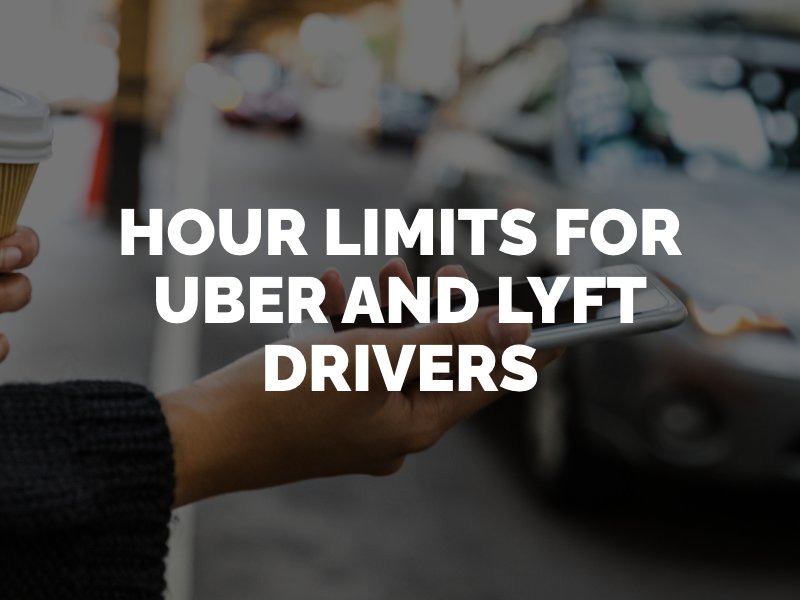Do Uber & Lyft Have Driving Hour Limits?
Pressure is something that most rideshare drivers face, especially as Uber and Lyft make it more and more difficult to earn a living driving. Both of these rideshare companies are known for squeezing as much as they can out of their drivers – and putting profits over user safety. An Uber or Lyft driver who is trying to earn as much as possible may make dangerous decisions, such as driving while drowsy or fatigued. To combat this issue, Uber and Lyft have driving hour limits.

The Dangers of Drowsy Driving
A motor vehicle driver needs all of his or her faculties to safely and properly operate a car – especially if transporting passengers. Anything that diminishes a driver’s ability to control a motor vehicle, pay attention to the road or drive prudently could lead to a serious car accident. This includes not getting enough sleep.
A tired or drowsy driver may suffer from impaired cognition and reduced performance behind the wheel. According to the National Highway Traffic Safety Administration, drowsy driving caused an estimated 91,000 car accidents in 2017, injuring around 50,000 people and taking 800 lives.
Driving Limits for Uber and Lyft Drivers
Since the conception of rideshare, this industry has been riddled with safety issues. Rideshare safety is questionable for riders, especially compared to the high safety standards of traditional taxis. From the beginning, riders expressed their concern about lax driver background checks, dangerous vehicles, the potential for crimes such as sexual assault, and a lack of oversight from Uber and Lyft.
In an effort to improve rider safety, however, both rideshare companies have enacted regulations. This includes driving hour limits to help decrease the odds of drowsy driving. Uber’s policy as of May 2018 is to allow a maximum of 12 hours of driving time before requiring the driver to take a break of at least 6 hours. Lyft’s policy is the same: a limit of 12 hours of driving before a mandatory 6-hour break.
The mandatory six hours of break time must be uninterrupted. Uber and Lyft ensure this by preventing drivers from going online until after at least six hours have passed from the last 12 hours of driving time. Only then may the driver log on and accept riders, and only for 12 hours before entering another mandatory 6-hour break period.
California State Driver Limits
In addition to the regulations put in place by Uber and Lyft, California has statewide laws regarding rideshare safety. Its driving limits are more stringent; California does not allow an Uber or Lyft driver to give rides for more than 10 consecutive hours in a 24-hour period without at least an 8-hour break. In addition, a driver cannot give rides for more than 10 hours in a 15-hour window without at least an 8-hour break.
Who Pays if a Drowsy Rideshare Driver Causes a Car Accident?
Despite the multiple hour regulations that apply to Uber and Lyft drivers, rideshare drivers may still succumb to drowsiness on the job. A lack of sleep during the rest period, trouble sleeping, sleep conditions such as sleep apnea, prescription medications, and many other things could contribute to Lyft or Uber driver fatigue. If a drowsy rideshare driver causes a car accident in Los Angeles, the driver and/or rideshare company could be held responsible.
To file a personal injury claim after an Uber or Lyft accident in LA, contact an attorney with experience handling this type of case. Rideshare accident cases have unique issues, including driver regulations like the hours-of-service restrictions. Your attorney should know how to navigate these rules and optimize the outcome of your case. To schedule a free consultation with a lawyer after a rideshare collision involving a drowsy Uber or Lyft driver, call Rose, Klein & Marias, LLP at (800) 362-7427.
 Free consultation
Free consultation